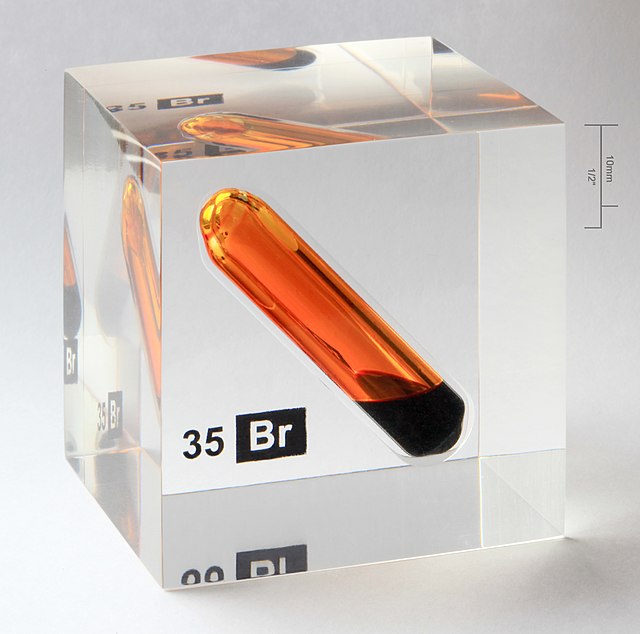In physics, a state of matter is one of the distinct forms in which matter can exist. Four states of matter are observable in everyday life: solid, liquid, gas, and plasma. Many intermediate states are known to exist, such as liquid crystal, and some states only exist under extreme conditions, such as Bose–Einstein condensates and Fermionic condensates, neutron-degenerate matter, and quark–gluon plasma. For a list of exotic states of matter, see the article List of states of matter.
Bromine in both liquid and gas state, encased inside acrylic in solid state
Helium's orange glow in its plasma state
Artificial plasma produced in air by a Jacob's Ladder. The extremely strong potential difference between the two rods ionize particles in the air, creating a plasma.
SBS block copolymer in TEM
In classical physics and general chemistry, matter is any substance that has mass and takes up space by having volume. All everyday objects that can be touched are ultimately composed of atoms, which are made up of interacting subatomic particles, and in everyday as well as scientific usage, matter generally includes atoms and anything made up of them, and any particles that act as if they have both rest mass and volume. However it does not include massless particles such as photons, or other energy phenomena or waves such as light or heat. Matter exists in various states. These include classical everyday phases such as solid, liquid, and gas – for example water exists as ice, liquid water, and gaseous steam – but other states are possible, including plasma, Bose–Einstein condensates, fermionic condensates, and quark–gluon plasma.
Hydrogen in its plasma state is the most abundant ordinary matter in the universe.
Steam and liquid water are two different forms of the same pure chemical substance, water.
Phase diagram for a typical substance at a fixed volume







